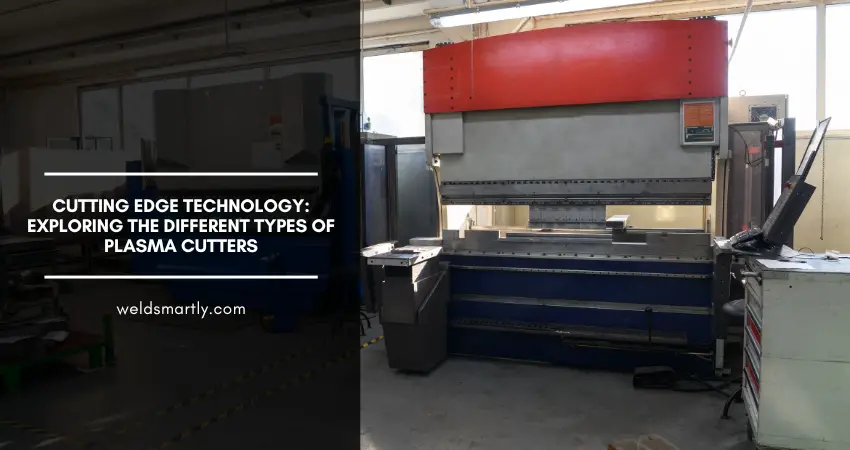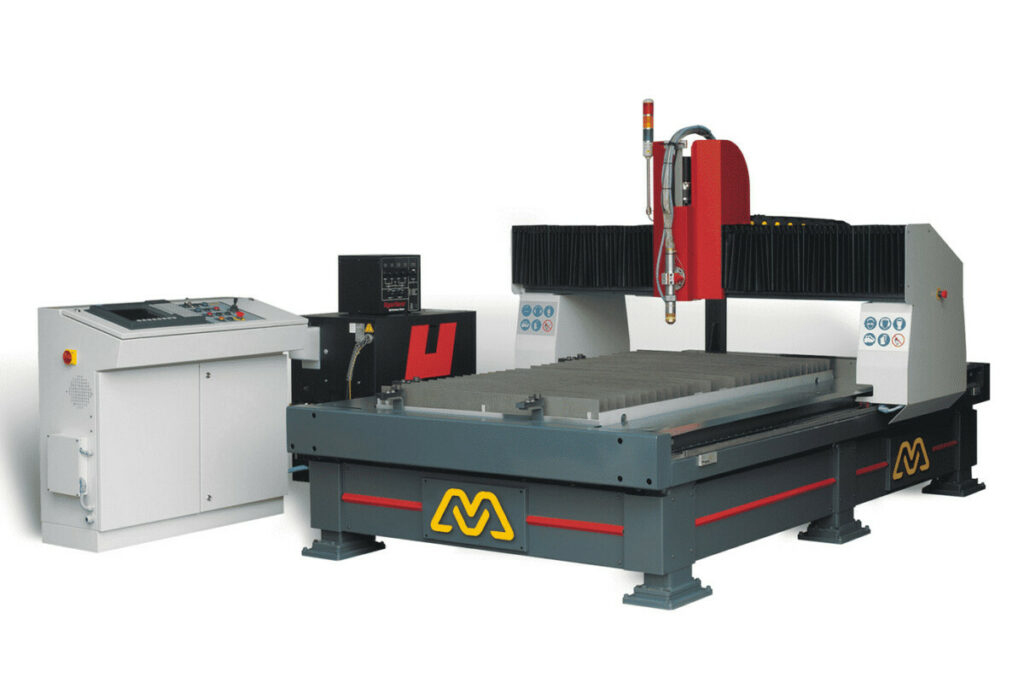Plasma cutting is a process used to cut through materials, such as metal, using a plasma torch. The plasma torch creates a high-energy plasma jet that is able to cut through the material, leaving a clean and precise edge. Plasma cutting is a versatile and efficient method that can be used for a variety of applications, from small DIY projects to large-scale industrial production. There are several different types of plasma cutters available, each with its own unique set of features and capabilities.
In this article, we will take a closer look at the different types of plasma cutters available, their advantages and disadvantages, and the applications for which they are best suited.
Types of Plasma Cutters
In general there are 4 types of plasma cutters –
- Handheld Plasma Cutters
- CNC Plasma Cutters
- High Definition Plasma Cutters
- Portable Plasma Cutters
Lets focus on each type along with their advantages, disadvantages, and use cases.

1. Handheld Plasma Cutters
Handheld plasma cutters are the most basic type of plasma cutter. They are portable and easy to use, making them well-suited for small DIY projects and on-site repairs. Handheld plasma cutters are also relatively affordable, which makes them a popular choice among hobbyists and small business owners.
Advantages:
- Portable and easy to use
- Affordable
- Good for small DIY projects and on-site repairs
Disadvantages:
- Limited cutting thickness
- Less precise cuts compared to other types of plasma cutters
- Less powerful compared to other types of plasma cutters
Common Applications:
- DIY projects
- On-site repairs
- Light industrial work
2. CNC Plasma Cutting Machines
CNC (computer numerical control) plasma cutting machines are a more advanced type of plasma cutter that offers increased precision and automation. These machines use computer programs to control the cutting process, which allows for precise cuts and the ability to cut complex shapes. CNC plasma cutting machines are commonly used in industrial settings, such as in the manufacturing of automotive parts, aerospace components, and other metal products.
Advantages:
- Increased precision and automation
- Ability to cut complex shapes
- Commonly used in industrial settings
Disadvantages:
- More expensive than other types of plasma cutters
- Require specialized software and training to operate
Common Applications:
- Industrial manufacturing
- Automotive parts
- Aerospace components
3. High-Definition Plasma Cutters

High-definition plasma cutters are a type of plasma cutter that uses high-frequency electrical discharges to create the plasma jet. This results in a higher-quality cut with less dross (material that is melted but not cut) and a smaller kerf (width of the cut). High-definition plasma cutters are commonly used in the aerospace, defense, and shipbuilding industries, where precise cuts and minimal material waste are important.
Advantages:
- High-quality cuts with less dross and a smaller kerf
- Commonly used in industries where precision and minimal material waste are important
Disadvantages:
- More expensive than other types of plasma cutters
- Require specialized training to operate
Common Applications:
- Aerospace
- Defense
- Shipbuilding
4. Portable Plasma Cutters
Portable plasma cutters are similar to handheld plasma cutters in that they are designed to be portable and easy to use. However, portable plasma cutters are typically more powerful and offer a greater cutting thickness than handheld plasma cutters. They are commonly used in construction and repair work, as well as in the manufacturing of metal products.
Advantages:
- Portable and easy to use
- More powerful than handheld plasma cutters
- Greater cutting thickness
Disadvantages:
- Less precise cuts compared to other types of plasma cutters
- Limited cutting capabilities compared to CNC or high-definition plasma cutters
Common Applications:
- Construction and repair work
- Manufacturing of metal products
- On-site fabrication
Additional Read:
Wrapping Up
In conclusion, there are several different types of plasma cutters available, each with its own unique set of features and capabilities.
- Handheld plasma cutters are the most basic type of plasma cutter and are well-suited for small DIY projects and on-site repairs.
- CNC plasma cutting machines offer increased precision and automation and are commonly used in industrial settings.
- High-definition plasma cutters are designed for precise cuts and minimal material waste and are commonly used in the aerospace, defense, and shipbuilding industries.
- Portable plasma cutters are similar to handheld plasma cutters but offer greater cutting thickness and power.
When choosing a plasma cutter, it is important to consider the specific needs of your project. For small DIY projects and on-site repairs, a handheld plasma cutter may be the best choice. For industrial manufacturing and precision cuts, a CNC or high-definition plasma cutter may be more appropriate. And for on-site fabrication and construction work, a portable plasma cutter may be the best option.
With this guide, you can choose the plasma cutter that best suits your needs, whether you’re a hobbyist, a small business owner, or an industrial manufacturer.
